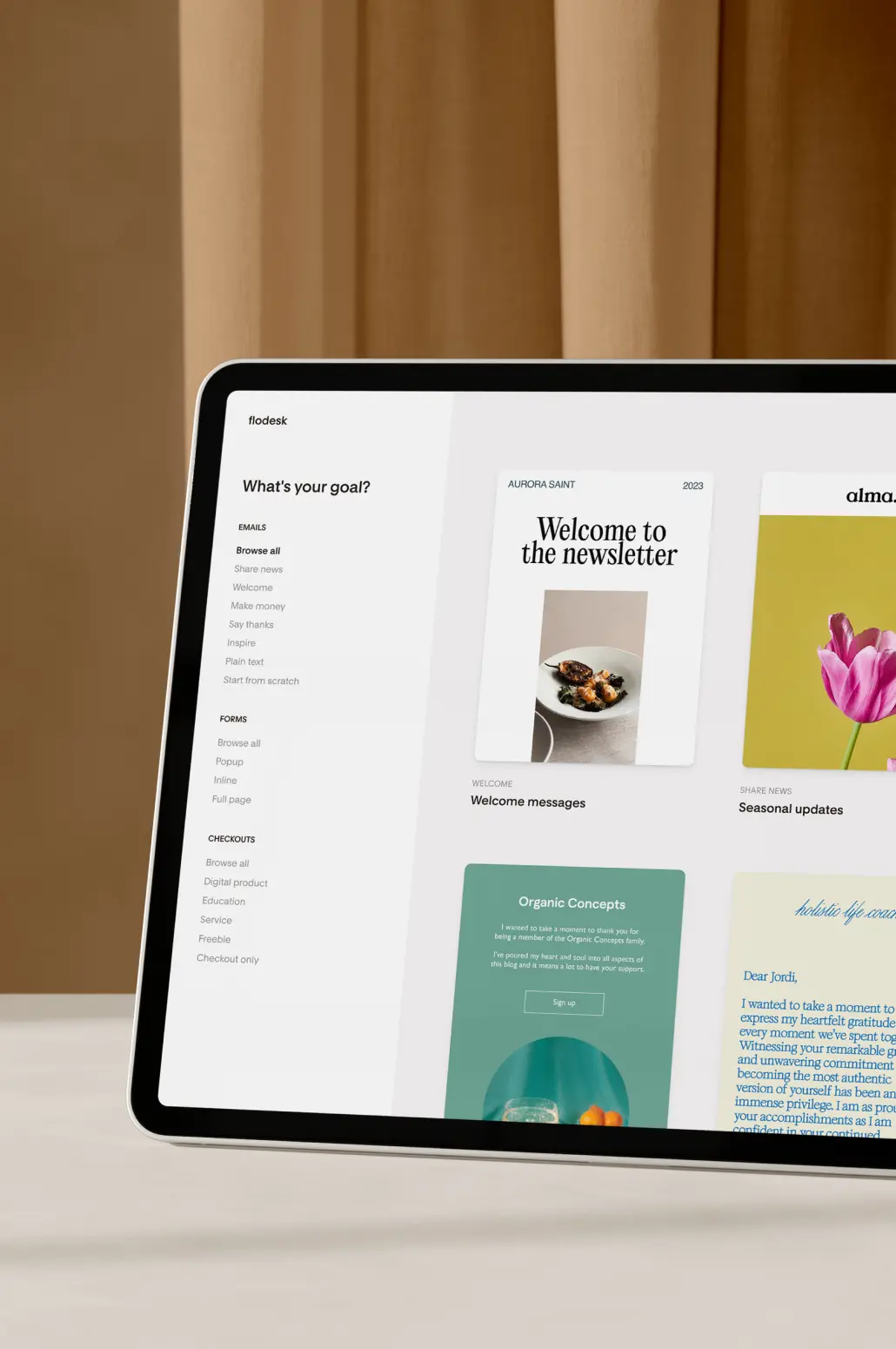Whether you’re a seasoned small business owner, or just beginning your small business journey, you may be considering offering digital products in addition to the services or products you currently offer. These days digital products are a hot topic — because they offer small business owners or new entrepreneurs an opportunity to monetize their gifts and talents in a scalable way. In other words, because digital products are digital, they can be sold anytime online and can theoretically offer unlimited earning potential. As with any business decision, though, we believe there are questions to ask, details to consider, and steps to take to make any new offering a success; with some foundational decisions and details in place, adding digital products to your small business can be seamless — and today, we’re excited to share how:

How to Add Digital Products to Your Small Business
Welcome to Episode 197 of The Brand It, Build It Podcast! I’m your host, Kelly Zugay, and today, we’re exploring how to add digital products to your small business.
Whether you’re a photographer, a stationery designer, event planner, or any other creative professional, creating digital products can be a ground-breaking for your business. While digital products do require work, once they’ve been created, they can be sold anytime — whether you’re working, on vacation, or experiencing “off season” for your one-on-one services. So, let’s explore how to design, deliver, and diversify to build a well-rounded and successful small business offering digital products.
First, what is a digital product? A digital product is a resource that can be offered, sold, and delivered online. Your digital product could be PDF checklist or guidebook, an educational course with written content, video content or both, Lightroom presets, brand design or web design templates, digital or printable artwork, and more.
Next, why should you consider offering digital products through your small business? Digital products offer a means of scaling your small business. Your one-on-one services likely require your presence, while digital products only require a working system for offering, selling, delivering your digital products. Digital products can be sold anytime, and usually in any quantity, so offering digital products through your small business offers a means of diversifying your revenue and growing your business beyond your one-on-one services. (This is also referred to as passive income — something we discuss comprehensively in Episode 011.)
So, once you’ve decided you’d like to offer digital products through your small business, where do you begin?
- Step 1: Choose a digital product, or category of digital products, you’d like to develop. With many small business decisions, beginning with a minimum viable product — or an MVP — is best. A minimum viable product is like a ‘bare bones’ trial version of the offering you’d like to create, so you can use your resources wisely. In other words, you’ll want to ‘test’ whether your desired digital products will be successful by developing just one or just a few digital products — rather than dedicating all of your resources to developing a wide array of products that may not succeed.
To determine which digital product, or category of digital products, you’d like to develop, it’s essential to deeply know and understand your audience. What pain points is your audience experiencing? What common questions do they have? What digital products are they in need of or searching for? What digital products can you create that would help your audience to be successful? How can you use your gifts and talents to create something long-lasting, like a resource, course, or other type of digital product?
You may also consider polling your audience and asking open-ended questions about the resources they’re often seeking. (It’s important not to lead your audience by asking if they would purchase the exact type of digital product you’re hoping to design — but instead, to let your audience share freely what they are looking for in an organic, honest, and open way.)
Additionally, it’s essential to deeply know and understand your business. What digital products are aligned with the mission, purpose, and vision of your business? What feels aligned with your overall business goals and objectives? What products best use your expertise to serve your audience? We believe, the small decisions we make today are the building blocks for our future businesses, so keeping aligned with your overall vision can help guide your decisions as you create digital products or expand your digital product offerings.
A few examples to get you started are: A PDF checklist, planner, or guidebook. An educational course created via Teachable, Thinkific, or Kajabi. Mobile Lightroom or Lightroom presets. Brand design templates, or web design templates for WordPress, Squarespace, Wix, Elementor, or Showit. Social media marketing templates via Canva. A stock photography subscription. Digital artwork, such as illustrations, lettered elements, or design elements. An exclusive membership with access to digital resources. These digital products and resources can be created just once and sold freely.
- Step 2: Create your digital product. Determine which resources you’ll need in order to create your digital products. You may use Canva for designing your PDF, checklist, guidebook, or social media templates. You may use Teachable, Thinkific, or Kajabi for creating your educational course. You may use Lightroom for creating your presets. Or you may use WordPress, Squarespace, Wix, Elementor, or Showit for creating your website templates. Determine which resources — such as software or subscriptions — you’ll need to create your digital product, and start creating. If possible, create a minimum viable product — a minimal version of your digital product — to test whether your digital product offerings will be successful. As an example, you may create and sell one high-quality Lightroom preset to sell to your audience, to determine whether your audience is likely to purchase your entire suite of Lightroom presets. As another example, you may create a one-page social media planner to sell to your audience, to determine whether your audience is likely to purchase a multi-page, comprehensive social media planner. Developing a minimal version of your digital product offerings will be the best use of your resources — and help you to evolve, learn, and grow as a digital product seller, too!
- Step 3: Determine how you’ll sell your digital product. Perhaps you’re a small business owner, and you already have a website of your own. Your website is a great place to sell your digital product offerings. You could also consider platforms like Etsy or Creative Market for selling your digital offerings. Though such websites do have fees, they also expose you to an audience beyond your existing website audience — which can be extremely advantageous.
To sell a product through your website, you may choose to use Square, Stripe, or Shopify Buy Button — systems that can embed within or link from your website to create a seamless shopping experience for your visitors. To sell a product via Etsy or Creative Market, you’ll want to create a seller account and add your business details and product details.
There are advantages and disadvantages to selling in one or both places — via your website, and via third-party platforms — so it’s important to determine what works best for you, your business, and your goals. As an example, selling solely on your website limits you to selling to your website’s visitors. So, as you assess where and how you’d like to sell your digital product, be sure to weigh the pros and cons and determine which platform or platforms are the best fit for you and your unique business goals. - Step 4: Determine how your digital products will be delivered — and how you can elevate your customers’ experience. Of course, when your customer purchases your digital product, they will receive your digital product — but what are some ways you can enhance or elevate your customers’ experience? Perhaps you can include a PDF or video tutorial to guide them through effectively using their digital product. Perhaps you can create an automated newsletter or email to be sent to your customer, thanking them for their purchase and providing resources for continued success. Adding products to your service-based business does require a shift in mindset — understanding what creates happy, returning customers.
So, just as you’ve designed an amazing client experience for your clients to journey through, consider your customers’ journey. How can their process from purchasing, to downloading, to using your digital products be made more seamless, engaging, and on-brand? - Step 5: Market your digital product. We believe newsletter marketing is a meaningful way to connect with and serve your audience, while building community in the process. In Episode 192, we share more about how to leverage newsletter marketing on behalf of your business.
One option is to create a Landing Page or Sales Page for your digital product, and gather email addresses to gauge interest in your digital product offerings. Another option is to market your digital products via your existing newsletter audience. Either way, your newsletter creates a unique opportunity to share the heart, purpose, and intentionality behind the digital products you’ve created.
Another option is to market your digital product on social media — using the platform or platforms where your unique audience is most likely to be. For small business owners, particularly solo small business owners, we believe it’s most helpful to leverage the platforms most beneficial to your business, so you aren’t doing extra work on extra platforms your audience may not utilize.
Launching or counting down to the debut of your digital products can also be a helpful method for building excitement surrounding your new offerings. Whether you do so on your website, via your newsletter, blog, or social media, building excitement can better guarantee your audience’s participation in your product launch.
Lastly, partnering with fellow small business owners, or even potential customers, can be a beneficial way to expand your reach and help you to connect with even more prospective customers.
No matter your approach to launching and marketing your digital products, having a plan is especially beneficial. That way, you can get organized, create any necessary graphics, captions, or content, and ensure that your launch plan is cohesive, consistent, and thorough. Sharing before, during, and after your desired launch day is beneficial, especially because our social media audiences aren’t always guaranteed to see our content. Put another way, our audience isn’t always online, and our posts aren’t always seen due to Instagram’s algorithm, so being comprehensive, consistent, and thorough in your approach to debuting your new products will be extremely helpful. - Step 6: Assess. Once you’ve created, offered, marketed, and sold your digital products, it’s extremely beneficial to assess the success of your digital product, as well as any feedback you received from prospective customers who didn’t purchase and feedback you received from customers who did purchase. This way, you can not only make adjustments to your minimum viable product — your current digital product offering — but you can also use what you’ve learned before developing additional digital products.
Today, we explored the art of creating, delivering, and diversifying your small business with digital products. Remember, the key to success with digital products is to understand your audience, provide value, and maintain alignment with your business overall. Additionally, engaging in marketing and building a community around your brand can help drive sales and grow your business. Thanks for tuning in!
Brand It, Build It Podcast, Hosted by Kelly Zugay
Hosted by Kelly Zugay, co-founder of With Grace and Gold, The Brand It, Build It Podcast is the best small business marketing podcast for small business owners, creatives, and founders. Weekly, brief, actionable episodes will equip you to build a successful, sustainable small business. Since 2014, With Grace and Gold has provided award-winning custom brand and Showit web design and completely customizable Showit website templates for small businesses worldwide.
Elevate your business with purpose using With Grace and Gold's step-by-step guide to raising your prices confidently. Receive the Guide
Free Guide to Raising Your Prices
Free Guide
Confidently
Become familiar with Showit using an expertly-created, completely-customizable Showit template by With Grace and Gold. Learn More
Free Showit Templates by
Free Showit Template
With Grace and Gold
Does your brand communicate luxury? Take our assessment and create a luxury brand for your business. Receive the Guide
How to Create a Luxury Brand
Free Guide
for Your Business
































































